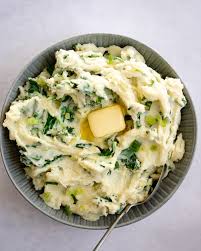Savory Pies: A Delicious Culinary Delight
When it comes to comfort food, few dishes can rival the humble savory pie. With its flaky crust and mouthwatering fillings, this culinary delight has been satisfying appetites around the world for centuries. From traditional classics to innovative creations, savory pies offer a versatile and flavorful dining experience that is sure to please even the most discerning palates.
One of the greatest joys of savory pies is their ability to encompass a wide range of flavors and ingredients. Whether you prefer meat, vegetables, or a combination of both, there is a pie out there to suit every taste. From hearty steak and ale pies to comforting chicken pot pies, the possibilities are endless. Vegetarian options are equally enticing, with delectable combinations such as spinach and feta or mushroom and leek offering a delightful alternative.
The beauty of savory pies lies not only in their diverse fillings but also in their crusts. A perfectly baked pie crust can elevate the entire eating experience. The golden-brown exterior gives way to a tender pastry that encases the flavorful filling within. Whether it’s a buttery shortcrust or a flaky puff pastry, the crust adds an extra layer of texture and taste that complements the savory goodness inside.
Savory pies have a rich history that spans across cultures. In Britain, for example, they have long been associated with comfort food and pub fare. The iconic Cornish pasty, with its crimped edges and hearty beef or vegetable filling, has become synonymous with British cuisine. In Australia and New Zealand, meat-filled hand-held pies have gained immense popularity as on-the-go snacks or quick meals.
But savory pies aren’t limited to just these regions; they have found their way into various culinary traditions worldwide. In Greece, spanakopita showcases layers of flaky phyllo pastry filled with spinach and feta cheese. In Argentina, empanadas offer a delightful blend of meat, vegetables, and spices, encased in a crispy pastry shell. Each culture puts its own unique twist on the savory pie, resulting in an array of flavors and textures.
What makes savory pies truly special is their ability to bring people together. Whether enjoyed as a family dinner or shared among friends at a gathering, they have a way of creating moments of warmth and connection. The act of slicing into a freshly baked pie and serving it to loved ones evokes feelings of comfort and joy.
For those who love to experiment in the kitchen, savory pies offer endless opportunities for creativity. From experimenting with different fillings and seasonings to playing with decorative crust designs, making your own savory pies allows you to put your personal touch on this beloved dish.
So next time you’re craving something comforting and satisfying, consider indulging in a savory pie. Whether you opt for a classic recipe or try something new and adventurous, these culinary delights are sure to tantalize your taste buds and leave you craving more. So gather your loved ones around the table, savor each bite, and celebrate the simple pleasure that is the savory pie.
9 Essential Tips for Perfect Savory Pies
- Start with a good crust. Use a high-quality store-bought crust or make your own from scratch for the best flavor and texture.
- Precook any vegetables you’re using in your filling to ensure they are cooked through before baking the pie.
- Add cheese to your savory pies for extra flavor and richness.
- Use flavorful ingredients like herbs, spices, garlic, and onions to add depth of flavor to your savory pies.
- For an ultra-flaky crust, use cold butter or shortening when making the dough and keep everything as cold as possible when working with it.
- When baking a savory pie, preheat the oven so that it’s hot enough by the time you put in the pie – this will help ensure a crispy bottom crust!
- To prevent soggy bottoms on pies with wet fillings (like quiches), blind bake them first before adding any filling ingredients – this will help create an extra barrier between the filling and the bottom of the crust so it doesn’t become soggy during baking!
- If you want to get creative with flavors, try adding different types of cheeses or mixing up different vegetables in your savory pies for unique combinations of flavors!
- Let your savory pies cool completely before serving – this will let all those delicious flavors meld together even more!
Start with a good crust. Use a high-quality store-bought crust or make your own from scratch for the best flavor and texture.
When it comes to making savory pies, one tip stands out above the rest: start with a good crust. The crust is the foundation of any pie and can make all the difference in terms of flavor and texture. Whether you choose to use a high-quality store-bought crust or make your own from scratch, investing in a good crust will elevate your savory pie to new heights.
If you’re short on time or prefer convenience, there are excellent store-bought crust options available. Look for brands that use quality ingredients and offer a flaky and buttery texture. These pre-made crusts can save you time in the kitchen while still delivering delicious results.
On the other hand, making your own crust from scratch allows you to have complete control over the ingredients and tailor it to your preferences. A homemade crust can be customized by adjusting the type of fat used (such as butter or lard) or adding herbs and spices for an extra flavor boost. While it may require a bit more effort, the satisfaction of creating a pie entirely from scratch is unmatched.
Regardless of whether you choose store-bought or homemade, there are a few key tips to keep in mind when working with pie crusts. First, ensure that all your ingredients are cold, including the fat and water. This will help create a flaky texture as the fat melts during baking. Additionally, handle the dough gently and avoid overworking it, as this can result in a tough crust.
When rolling out the dough, lightly flour your work surface and rolling pin to prevent sticking. Roll from the center outward in even strokes to achieve an even thickness throughout. Once your dough is rolled out, carefully transfer it to your pie dish, pressing it gently into place without stretching it too much.
Finally, don’t forget to blind bake your pie crust before adding the filling if required by your recipe. This step helps ensure that the bottom of the crust cooks properly without becoming soggy.
Starting with a good crust sets the stage for a delectable savory pie. It provides the perfect vessel to hold your flavorful fillings and adds that satisfying crunch and buttery taste. Whether you opt for a high-quality store-bought crust or take the time to make your own, investing in a good crust will undoubtedly enhance your savory pie experience. So, roll up your sleeves, gather your ingredients, and let the magic of a great crust elevate your next savory pie creation!
Precook any vegetables you’re using in your filling to ensure they are cooked through before baking the pie.
Enhance Your Savory Pies: Precooking Vegetables for Perfect Results
When it comes to crafting the perfect savory pie, every element plays a crucial role in achieving a delightful culinary experience. One essential tip to elevate your savory pies is to precook any vegetables that you plan to include in your filling. This simple step ensures that the vegetables are thoroughly cooked, tender, and bursting with flavor before they even enter the oven.
Why should you consider pre-cooking your vegetables? Well, when a pie bakes, the cooking time for the filling may not be sufficient to fully cook certain vegetables. By precooking them, you can avoid undercooked or crunchy veggies in your final dish. Instead, you’ll achieve a harmonious blend of flavors and textures throughout your pie.
To begin, select your favorite vegetables to incorporate into the filling. Whether it’s carrots, peas, mushrooms, or any other vegetable of choice, this technique will work wonders for ensuring their optimal taste and texture. Start by sautéing or blanching the vegetables until they reach a desired level of tenderness. This process allows them to release their natural juices and flavors while becoming soft enough to blend seamlessly with other ingredients.
Precooking also offers an opportunity to infuse additional flavors into your veggies. You can season them with herbs, spices, or even a splash of broth or wine during the cooking process. This extra step adds depth and complexity to the overall taste profile of your savory pie.
Once your vegetables are perfectly cooked and seasoned, allow them to cool slightly before incorporating them into your pie filling. This step prevents excessive moisture from accumulating in the filling during baking and ensures that everything remains well-balanced inside the crust.
By precooking your vegetables for savory pies, you take control over their doneness and ensure that each bite is filled with tender goodness. No more worrying about undercooked or unevenly cooked veggies detracting from the overall enjoyment of your pie.
So, the next time you embark on a savory pie-making adventure, remember this valuable tip: precook your vegetables. Your taste buds will thank you as they savor the harmonious blend of flavors and the perfectly cooked vegetables that make each slice an irresistible delight.
Add cheese to your savory pies for extra flavor and richness.
Enhance the Deliciousness of Savory Pies with a Cheesy Twist
When it comes to elevating the flavor and richness of your savory pies, there’s one simple tip that never fails: add cheese. Whether you’re a fan of sharp cheddar, gooey mozzarella, or tangy feta, incorporating cheese into your pie fillings can take your culinary creation to a whole new level of deliciousness.
The addition of cheese brings an extra layer of complexity and depth to the flavors in your savory pies. The creamy and melty texture of cheese blends harmoniously with other ingredients, creating a delightful symphony for your taste buds. The subtle saltiness and umami notes from the cheese can enhance the overall savory profile of the pie, making each bite even more satisfying.
When it comes to choosing the right cheese for your savory pie, the options are endless. For meat-based fillings like chicken or beef, consider using sharp cheddar or gruyère. These cheeses have robust flavors that complement the hearty meats perfectly. If you’re opting for a vegetarian filling, crumbled feta or grated Parmesan can add a delightful tanginess and saltiness that pairs well with vegetables like spinach or roasted peppers.
To incorporate cheese into your savory pies, simply sprinkle it over the filling before sealing the pie crust. As it bakes, the cheese will melt and meld with the other ingredients, infusing every bite with its irresistible goodness. You’ll be rewarded with a golden-brown crust on top and pockets of gooey melted cheese inside.
Adding cheese not only enhances the flavor but also contributes to the overall richness and indulgence factor of your savory pies. It creates a luscious mouthfeel that makes each bite feel incredibly satisfying. The combination of flaky pastry, flavorful filling, and melted cheese creates a harmony that is hard to resist.
So next time you’re preparing a savory pie, don’t forget to reach for the cheese. Whether you’re making a classic chicken pot pie or experimenting with unique flavor combinations, adding cheese will undoubtedly take your creation to new heights. Embrace the richness, depth, and pure deliciousness that cheese brings to your savory pies, and watch as everyone at the table savors each bite with delight.
Use flavorful ingredients like herbs, spices, garlic, and onions to add depth of flavor to your savory pies.
Enhancing the Flavor of Savory Pies: A Tip Worth Savoring
When it comes to creating memorable savory pies, one key tip stands out: elevate the taste by incorporating flavorful ingredients. By adding a combination of herbs, spices, garlic, and onions to your pie fillings, you can take your culinary creation to new heights and delight your taste buds with an explosion of flavors.
Herbs are a fantastic way to infuse your savory pies with aromatic notes. Whether it’s the earthiness of rosemary, the freshness of basil, or the warmth of thyme, herbs bring a distinct character to each bite. Sprinkle a handful of freshly chopped herbs into your filling mixture or even add them as a garnish on top for an extra burst of flavor.
Spices are another secret weapon in enhancing the taste profile of savory pies. From mild options like cumin and paprika to bolder choices such as chili powder or curry blends, spices can add depth and complexity to your fillings. Just a pinch or two can transform an ordinary pie into a culinary masterpiece that tantalizes the senses.
Garlic and onions are staples in savory cooking for good reason. These aromatic ingredients provide a robust base flavor that can elevate any dish, including savory pies. Sautéing finely chopped onions and minced garlic before incorporating them into your filling not only enhances their natural sweetness but also adds layers of savory richness that will leave you craving more.
The beauty of using flavorful ingredients in savory pies is that they allow you to customize each creation according to your preferences. Whether you’re making a classic chicken pot pie or experimenting with vegetarian options like mushroom and spinach, these additions can take your recipe from good to extraordinary.
Remember, balance is key when working with these ingredients. Start with smaller amounts and adjust according to taste as you go along. Allow yourself room for experimentation and trust your palate to guide you towards achieving the perfect balance of flavors.
So, the next time you embark on a savory pie-making adventure, don’t be afraid to embrace the power of herbs, spices, garlic, and onions. Let these ingredients work their magic and transform your pies into culinary masterpieces that will have everyone coming back for seconds. With each bite, you’ll savor the depth of flavor and appreciate the delightful symphony of tastes dancing on your tongue.
For an ultra-flaky crust, use cold butter or shortening when making the dough and keep everything as cold as possible when working with it.
Achieving the Perfect Flaky Crust: The Cold Butter Secret
When it comes to making savory pies with a heavenly flaky crust, there’s one tip that stands out above the rest: using cold butter or shortening. This simple yet effective technique can take your pie crust from good to exceptional, ensuring a delicate texture that practically melts in your mouth.
The secret lies in the temperature. By keeping your butter or shortening as cold as possible throughout the dough-making process, you create pockets of fat that melt during baking, resulting in those sought-after layers of flakiness. The colder the fat, the better chance you have of achieving that delicate texture.
To incorporate this tip into your savory pie dough, start by cutting your cold butter or shortening into small cubes. Using a pastry cutter or your fingertips, work the fat into the flour until it resembles coarse crumbs. The goal is to have visible pea-sized pieces of fat distributed throughout the mixture.
Why is cold butter or shortening so crucial? When these fats are solid and cold, they don’t fully blend into the flour mixture. As they melt during baking, they create steam, which lifts and separates the layers of dough, resulting in that irresistible flakiness we all crave.
To maintain this chilly environment while working with the dough, some bakers even go as far as chilling their mixing bowl and utensils beforehand. This extra step ensures that every component stays as cold as possible throughout the process.
Once you’ve achieved a crumbly mixture with visible chunks of fat, it’s time to add just enough ice-cold water to bring everything together. Be careful not to overwork the dough at this point; a light touch is key for maintaining those precious layers.
After shaping your dough into a disk and wrapping it tightly in plastic wrap, pop it back into the refrigerator for at least 30 minutes (or even overnight) before rolling it out. This resting period allows the gluten to relax and the fat to solidify, resulting in an easier-to-handle dough and a flakier end result.
When it’s time to roll out the dough, work on a lightly floured surface and use a chilled rolling pin. Roll from the center outward, rotating the dough occasionally to ensure even thickness. The goal is to keep everything as cold as possible during this process, so if the dough becomes too warm or sticky, don’t hesitate to pop it back into the refrigerator for a few minutes.
By following this tip of using cold butter or shortening and keeping everything as cold as possible when working with your savory pie dough, you’ll be rewarded with a crust that is light, delicate, and irresistibly flaky. So go ahead and give it a try – your taste buds will thank you for it!
When baking a savory pie, preheat the oven so that it’s hot enough by the time you put in the pie – this will help ensure a crispy bottom crust!
The Secret to a Perfectly Crispy Savory Pie Crust
When it comes to baking savory pies, achieving a perfectly crispy bottom crust is the key to culinary success. There’s nothing quite like biting into a pie with a golden, flaky crust that adds an irresistible crunch to every bite. To ensure your pie crust turns out just right, there’s one simple tip you should always keep in mind: preheat the oven.
Preheating the oven is a crucial step that often gets overlooked in the rush of preparing a savory pie. By preheating the oven, you allow it to reach the optimal temperature before placing your pie inside. This ensures that the heat is evenly distributed throughout the oven, creating an ideal environment for baking.
When you put your pie into a hot oven, it immediately begins to cook from the bottom up. The high heat causes the butter or fat in the pastry dough to melt quickly, creating steam that lifts and separates the layers of dough, resulting in that desired flaky texture. Additionally, preheating helps set and seal the bottom crust before the filling starts releasing moisture, preventing it from becoming soggy.
Imagine biting into a savory pie with a soggy bottom crust – it’s not quite what you had in mind, right? By taking just a few extra minutes to preheat your oven properly, you can avoid this disappointment and achieve that delightful crispness we all crave.
So how do you ensure your oven is hot enough? Start by preheating it at least 15-20 minutes before placing your pie inside. Check its temperature with an oven thermometer if necessary to ensure accuracy. Most savory pies bake at around 375°F (190°C) or higher depending on the recipe.
While preheating may seem like a small detail, it plays a significant role in achieving bakery-worthy results. So next time you’re preparing a savory pie for yourself or loved ones, remember to give your oven the time it needs to heat up. This simple step will make all the difference, giving you a perfectly crispy bottom crust that enhances the overall enjoyment of your savory pie experience.
With this tip in mind, get ready to impress with your culinary skills and serve up savory pies that are not only delicious but also boast a tantalizingly crispy crust. Enjoy the satisfaction of hearing that delightful crunch as you bite into each slice, knowing that you’ve mastered the art of baking a savory pie with perfection.
To prevent soggy bottoms on pies with wet fillings (like quiches), blind bake them first before adding any filling ingredients – this will help create an extra barrier between the filling and the bottom of the crust so it doesn’t become soggy during baking!
A Savory Pie Tip: Say Goodbye to Soggy Bottoms!
When it comes to baking savory pies with wet fillings, such as quiches, there’s one common challenge that many home cooks face: the dreaded soggy bottom crust. But fear not! We have a simple yet effective tip to ensure your pie crust stays delightfully crisp and flaky from edge to edge.
The secret lies in blind baking the crust before adding any filling ingredients. Blind baking refers to pre-baking the pie crust without any filling, creating a protective barrier between the wet ingredients and the bottom of the crust. This extra step may require a few additional minutes of preparation, but the end result is well worth it.
To blind bake your pie crust, start by rolling out your pastry and fitting it into the pie dish. Prick the bottom of the crust with a fork to prevent it from puffing up during baking. Then, line the pastry with parchment paper or aluminum foil and fill it with pie weights or dried beans. The weights will help keep the pastry flat and prevent it from shrinking or bubbling up.
Place your pie dish in a preheated oven and bake at a moderate temperature for about 10-15 minutes or until the edges of the crust start turning golden brown. This initial baking sets the structure of the crust, allowing it to hold up against any moisture from your filling.
Once you’ve blind baked your crust, remove it from the oven and carefully take out the parchment paper or foil along with the weights. At this point, your pie shell is ready for its flavorful filling. Add all your desired ingredients – whether it’s a cheesy quiche mixture or a medley of vegetables – on top of the partially baked crust.
Return your filled pie dish to the oven and continue baking until both the filling and top are cooked through and beautifully golden. By blind baking first, you create an extra layer of protection between the wet ingredients and the crust, preventing any sogginess from seeping in.
With this simple tip, you can confidently serve up savory pies with perfectly crisp and flaky crusts every time. So go ahead and experiment with different fillings, knowing that your pie will have a sturdy base that won’t let you down. Enjoy the delightful contrast of textures as you savor each bite without worrying about any unwelcome sogginess.
Remember, blind baking is the key to achieving a deliciously crisp bottom crust on pies with wet fillings. Give it a try, and elevate your savory pie game to new heights!
If you want to get creative with flavors, try adding different types of cheeses or mixing up different vegetables in your savory pies for unique combinations of flavors!
Elevate Your Savory Pies: Unleash Your Creativity with Flavors
If you’re a fan of savory pies and want to take your culinary adventures to the next level, here’s a tip that will ignite your taste buds: get creative with flavors! By adding different types of cheeses or mixing up various vegetables in your savory pies, you can create unique combinations that will tantalize your palate and leave you craving more.
Cheese lovers rejoice! Adding different types of cheeses to your savory pies can transform them into flavor-packed masterpieces. Experiment with sharp cheddar for a tangy kick, creamy goat cheese for a luxurious touch, or even smoky Gouda for an added depth of flavor. The cheese not only adds richness but also helps bind the ingredients together, creating a harmonious balance within the pie.
Vegetables are another avenue to explore when it comes to inventive flavor combinations in savory pies. While traditional recipes often rely on staples like carrots, peas, and potatoes, don’t be afraid to mix things up. Consider incorporating roasted butternut squash for a hint of sweetness, sautéed mushrooms for an earthy note, or caramelized onions for a touch of sweetness and depth. The possibilities are endless!
By experimenting with different cheeses and vegetables in your savory pies, you can create exciting flavor profiles that will surprise and delight your taste buds. Imagine the creaminess of melted Brie paired with roasted red peppers or the sharpness of blue cheese complementing caramelized leeks. These unique combinations add depth and complexity to your pies, making each bite a delightful adventure.
Don’t forget about herbs and spices! They can elevate the flavors even further. Add some fresh thyme or rosemary for an aromatic touch, sprinkle paprika for a smoky kick, or experiment with exotic spices like cumin or turmeric to infuse your savory pies with global influences.
The beauty of savory pies is that they are a canvas for your culinary creativity. Don’t be afraid to mix and match ingredients, explore new flavors, and let your imagination run wild. With each new combination, you’ll discover exciting tastes that will keep you coming back for more.
So, the next time you’re preparing a savory pie, take a leap and experiment with different types of cheeses and vegetables. Let your taste buds guide you as you create unique flavor combinations that will leave everyone around the table asking for seconds. Embrace the joy of culinary exploration and elevate your savory pies to new heights of deliciousness!
Let your savory pies cool completely before serving – this will let all those delicious flavors meld together even more!
Enhance the Flavor: The Importance of Cooling Savory Pies
When it comes to enjoying savory pies, there’s a simple tip that can take your culinary experience to the next level: let them cool completely before serving. While it may be tempting to dive right into that piping hot pie straight from the oven, exercising a little patience can yield incredible rewards for your taste buds.
Allowing savory pies to cool not only prevents any accidental burns but also allows the flavors within to meld together harmoniously. As the pie cools, the ingredients have time to settle, allowing their individual tastes to mingle and create a symphony of deliciousness.
The cooling process allows the fillings and seasonings to infuse into one another, resulting in a more cohesive and flavorful bite. The warmth trapped within the pie during baking gradually dissipates as it cools, enabling all those mouthwatering flavors to blend and develop their full potential.
Moreover, cooling savory pies helps solidify their structure. It allows the fillings to set and thicken slightly, making slicing and serving easier while maintaining the integrity of each ingredient. This ensures that every slice is neat and holds together beautifully when plated.
Another benefit of letting savory pies cool completely is that it helps achieve an ideal texture. While hot pies may have a softer consistency that can be more prone to collapsing or becoming messy when cut, cooled pies offer a firmer texture that holds up well on the plate. This ensures that every bite delivers a satisfying balance of crust and filling.
To maximize flavor infusion and achieve optimal results, it’s recommended to let your savory pies cool for at least 15-20 minutes before serving. During this time, you can prepare any accompanying sides or garnishes or simply enjoy the tantalizing aroma wafting through your kitchen.
So resist the temptation to dig into that freshly baked savory pie immediately after taking it out of the oven. Exercise patience and allow it to cool completely. By doing so, you’ll be rewarded with a pie that not only looks visually appealing but also bursts with flavors that have had time to meld and harmonize. So sit back, relax, and savor the delightful experience of a perfectly cooled savory pie.











